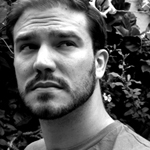| pHOENIX, ARIZONA 31 AUGUST 2008 |
|
|
PHOENIX poets Editor's Note: Charles Jensen poetry resources Arizona Citizens/Action for the Arts Arizona Commission on the Arts Arizona State Poetry Society ASU Writers Conference Changing Hands Bookstore Copper Star Coffee Poetry Series Free Arts of Arizona Hayden's Ferry Review Hayden's Ferry Review Blog & Podcast Merge Poetry NorAZ Poets' Alzheimer's Poetry Project Phoenix College New Voices Event Series Phoenix New Times Literary Event List Phoenix Office of Arts & Culture Superstition Review ShowUp.Com's Poetry Event List Tempe Poetry in April Virginia G. Piper Center for Creative Writing at Arizona State University West Valley Arts Council Membership Program Writer's Bloc CURRENT LOCI BOSTON ABOUT LOCUSPOINT About the LOCUSPOINT Project
|
EDITOR'S NOTE Phoenix, as a city and an entity, is widely misunderstood by the majority of America and Americans. Yes, it is in a desert. No, it does not have tumbleweeds. Yes, there is grass, and yes, most people landscape their homes with gravel instead. There are palm trees and yes, cactus is common, but so are oleander, bougainvillea, hibiscus, green-barked palo verde trees, and a host of other flora. Yes, there are gila monsters, but they are shy and scarce. You're more likely to encounter quail. It is flat, but is surrounded by mountains. And yes, it does get humid, and hot, and sometimes the sky bursts open and drops several inches of rain in just a few minutes. Phoenix is an awkward commingling of the ancient and the new. Its name pays tribute to the way it was developed, built over (and using) a centuries-old canal system developed by the Hohokam people, who either vanished or abandoned their settlement there. But a sense of history like this isn't pervasive. Since 2000 its population has increased by 24%, making it now the fifth largest city in the United States and the largest state capital. The city's "historical neighborhoods" typically date back to the 1940s and 1950s, but Phoenix isn't a city of short memory; it was (and is) built by transplants and transients. It's also enormous. You can drive the freeway from one corner of the metro area to the other at top speed and still not get there for almost two hours. It makes bringing people together challenging; instead of a central community, Phoenix really is a collection of urban and suburban pockets pulled together by roads, canals, and not much else. As an arts community, Phoenix is rapidly developing. While it does already have the expected resources—a notable ballet and symphony as well as significant theatre—there's a lot of activity happening at the ground level. People are organizing literary groups, readings, theatre companies at the grassroots level, making the scene both dynamic and somewhat elusive. Changing Hands Bookstore in Tempe has provided the most consistent beacon for literary community and was recently recognized as Publisher's Weekly's Bookseller of the Year in 2007. And newer efforts, like the Virginia G. Piper Center for Creative Writing at Arizona State University, are making in-roads toward a centralized literary community as well. Of the poets in this edition, only one is a native Arizonan. The others, like most of the population, were brought here for school, for jobs. Of them, two of us recently left and one is looking for a way out. Another has already left and returned. Phoenix is the kind of city that inspires this—you either love it or hate it, but either way you will never forget it or your time there.
|

